Features of national designers (in pictures). Part 1

In childhood, we didn’t particularly think about where the parts for the favorite designer appeared - unless this was a matter of particular pride. But now we have grown. We still love designers and, for the sake of interest, figured out how they influenced the formation of a techie in a single IT project.
And what if we take the global scale? Let's look at the famous and not so designers from different countries and try to understand how they could affect the local Internet industry. Since we are closer to the theme of site designers - in the block about Internet projects we will talk about them.
1. Japan: “To think that you cannot achieve what the master has achieved - to show the sluggishness of the spirit"
Fragile, like the beauty of the world . So you can say about origami - probably the most famous designer from Japan.

"And this is exactly the designer? It seems to be a “just one set” detail, and people just follow the schemes of
But! No one says that it is impossible to surpass the master and make something of your own. And today, moreover, a “modular origami” is being developed - a new approach in which different parts can be combined on a whim, as in a real designer.
Versatile, like a Japanese saw . This is about the designer Wammy. Just a few bone-shaped parts, bending, allow you to create amazingly beautiful and finished things: even a penguin with funny legs, even a model of the Earth.
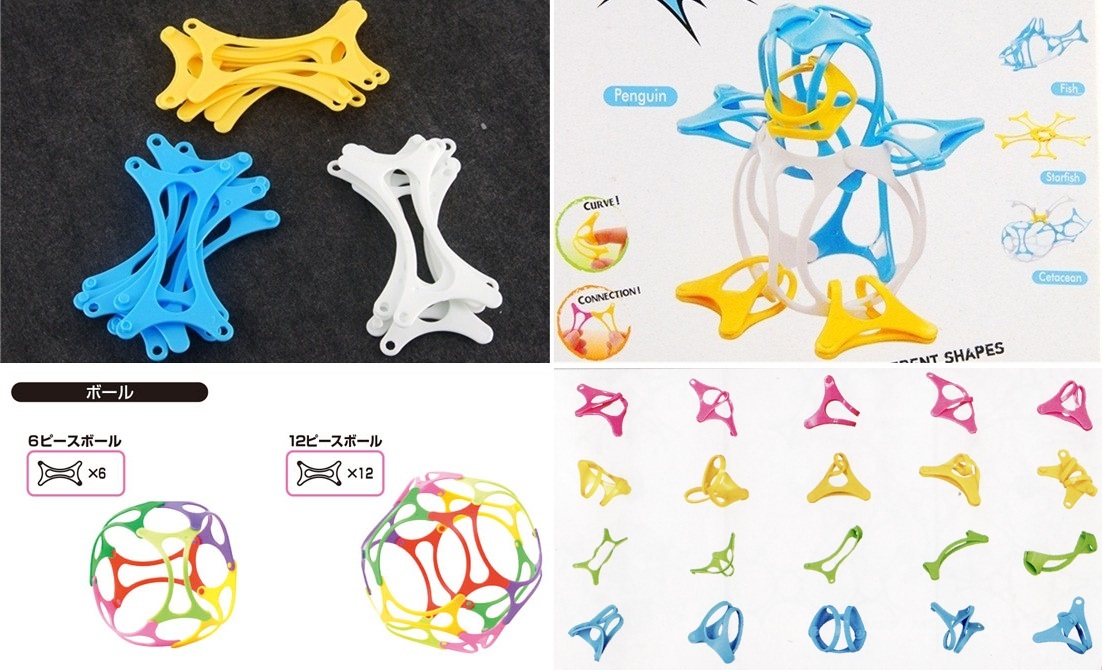
On the one hand, it is fragile and changeable, like origami. On the other, it looks much simpler.
Laconic like hockey . Japanese minimalism perfectly reflect the wooden sets Tsumiki. The designer contains only one type of parts - wooden corners from local cedar.

Have you ever tried to collect something from the same stumps - provided that these are not rectangular bars?
Complicated and elegant, like Japanese . At first glance, it seems that Japanese designers are some kind of step into the world of art and philosophy, and not robotics and engineering approach. But take a look at LaQ:
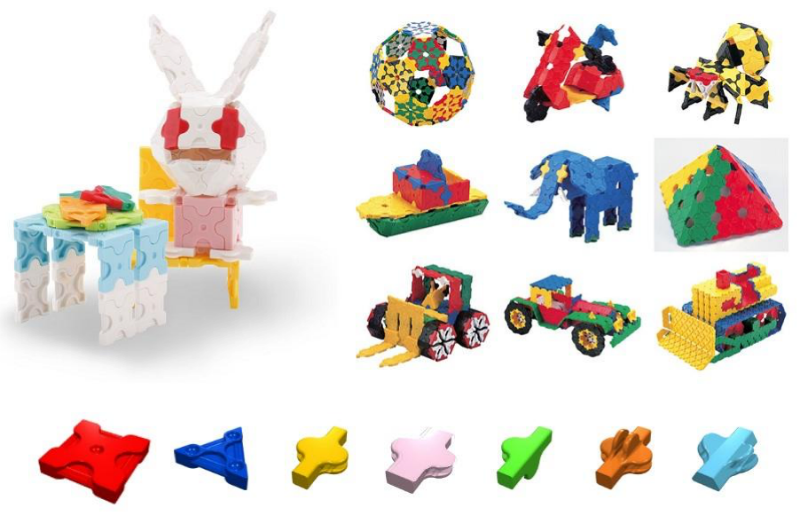
This “Strömnozayka” did not accidentally hit the title picture of the post.
In the 21st century, Japan entered with a very cool designer: several mounting options allow you to literally grow with LaQ - from simple cubes to complex shapes of hundreds of parts. And additional elements in the form of wheels and gears allow you to create moving models.
***
In general, the Japanese have long shown themselves to be craftsmen to put the achievements of various nations of the world to their advantage. For example, to create origami, they took a Chinese invention - paper.

And to create websites, the Japanese learned Wordpress - this moderately fragile platform in inept hands occupies a huge share of their home market. In general, the Japanese like to be confused.
2. Russia: "All your own"
Continuity . We have such a famous pseudo-constructor - matryoshka. This toy not only conquered the world, but also clearly influenced those associated with the design.

And the matryoshka became the inspiration for the Amperka team, which sells such ready-made sets of electronic designers:

Unkillable . So historically, it was better not to break toys as a child. But they didn’t break much - and today our children's designers can be inherited .
Multifaceted . Although the country lived for a long time behind the Iron Curtain, all the main types of
designers were conditionally accessible.
And metallic  | And wooden  |
|---|---|
And magnetic 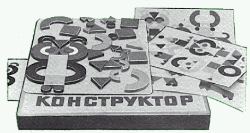 | And plastic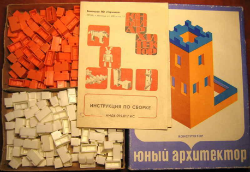 |
And they were designed for different requests. The designers were simple and a little more toy-like, as the “designer of helicopters”:
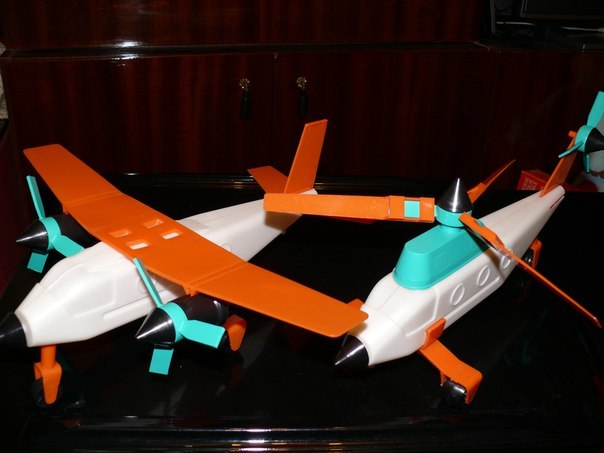
And more complex ones, like “Fantasia” and “Flight” - which, given the outward appearance, gave almost unlimited engineering possibilities:

Practical . A number of Soviet designers taught the important and useful: to collect electrical circuits, to chemize and so on. Modern domestic projects continue this good tradition. For example, "Expert" teaches to collect electronic circuits.
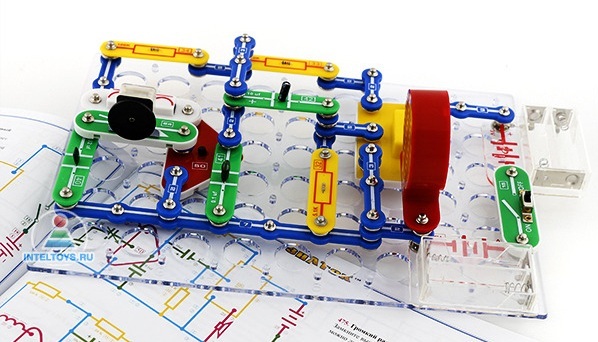
But the chemical designer MEL Chemistry from the former IT specialist Vasily Fillipov. The creation of a person from the IT field in this project provides a monthly subscription model.

We note a big plus of these modern versions of Econ and Young Chemist - while maintaining their practicality, they evolved to a beautiful and pleasant, competitive packaging and product delivery.
Competitive . Look at "Funklastik" - this year the designer took the third place in the competition A 'Design Award and Competition in the category "Toys, games and goods for a hobby", beating around 1200 competitors. It is produced in Noginsk near Moscow, and in terms of engineering capabilities it is not worse than the Japanese LaQ.
Well, the authors of the project themselves speak of themselves as Lego competitors. And besides ambition, they are doing well with marketing.

In Russia, they go to schools and to mathematical Olympiads. And in the world - they are preparing to export the designer. They have something to show a foreign audience: for example, such are the sets for assembling the Sith and Jedi sword:
***
Exactly all yours . It cannot be said that exactly “thanks to”, but certainly not contrary to this design tradition in Russia, an excellent generation of techies has grown. We have our own search. Your social networks. And site designers, too, mostly their own.
What our uKit site builder will be like has been influenced by the love of childhood designers. We made our site builder unkillable — so that even a child could not break. Practical - with built-in tips on how to develop and promote the site.

Multifaceted - for any small business, from tire to a private kindergarten. And competitive - so that it would not be a shame to show in Paris like a nested doll once (more on that later).
3. Canada: “In addition to jokes, we can compete with Lego”
In addition to Jim Carrey, this country gave us the first magnetic designer.

The company that released it, today has become the second most capitalized company in the market of children's designers - Mega Bloks.
The second after the "Lego" . True, Mega Blocks’s financial success was not at all a magnetic constructor. It turned out that the most profitable business of the 20th century is the production of inexpensive Lego-compatible plastic blocks. With the start of sales of these items, things went uphill. And nowadays thematic kits devoted to the heroes of TV series and computer games began to appear.
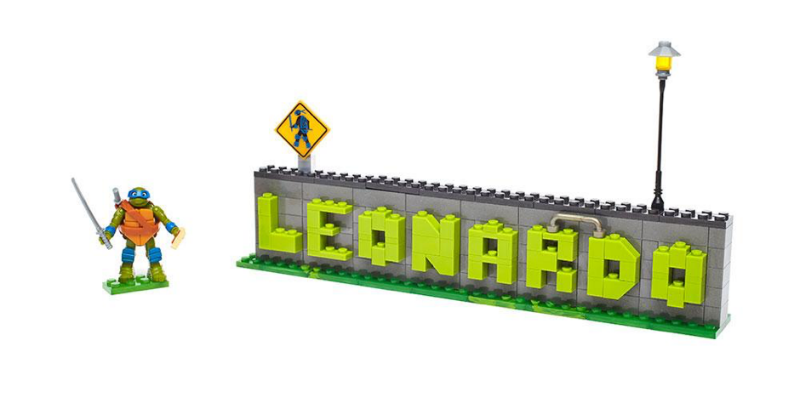
In parallel, the company continues to release "their" plastic designers, which have already grown three generations of Canadians.

This is almost all you need to know about Canadian designers.. In Canada, even the designers of the sites do not - they are “imported” from the neighboring United States, the largest market of designers.
Unpretentious local site-building projects can be found only at hosting services (as in Russia at Reg.ru).

An illustrative example: the built-in site builder hosted by HostPapa. In general, in Canada, with the designers succeed units.
4. Italy: “I will make you an offer you cannot refuse”
Well, if the Italian designer makes, it will be difficult to resist. See for yourself.
Designer, eternal, like Rome . Pizza is probably one of the first food designers. Today every self-respecting pizzeria has its own pizza designer.

But if tyrkalka “adds more cheese” on the Internet is a marketing ploy, then the product itself is almost an ideal designer. It gives a huge field for creativity, freedom in adding details and provides amazing compatibility of components. Finally, this is the only designer in the selection, who just wants to eat.
The revival of the Italian designer . It would seem that after pizza the genius of the Italian designer took a timeout for millennia. It turned out he was silent, so that in the mid-2000s he could give birth to a beautiful Arduino.
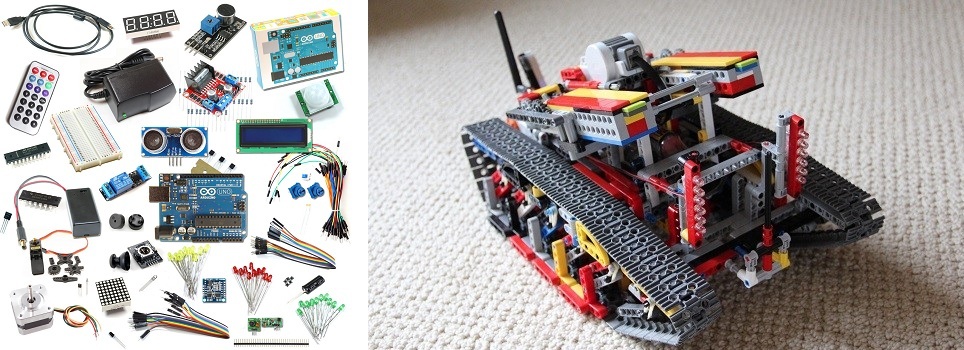
Another almost perfect constructor. Particularly pleased that it can be safely combined with your favorite designers of childhood.
"We will make a constructor for those who do designers!" . Italians are doing well in the digital realm. In 2008, they launched a great tool for those who design information services - Balsamiq.
In its own way, this is such a constructor for those who make constructors.

The Italians have no particular website designers. But, we think, if they invent something in this sphere, the whole world will know about it - as about pizza and Arduino.
5. France: “But we invented mayonnaise”
"Thank you for being alive . " In the 1920s, the British company Mekkano, which produced the same legendary metal constructor, opened one of its factories in France. In the mid-1980s, when Mekcano almost collapsed, one grateful Frenchman bought the brand and restarted production.
From then until recently, all new designer models were developed in France.
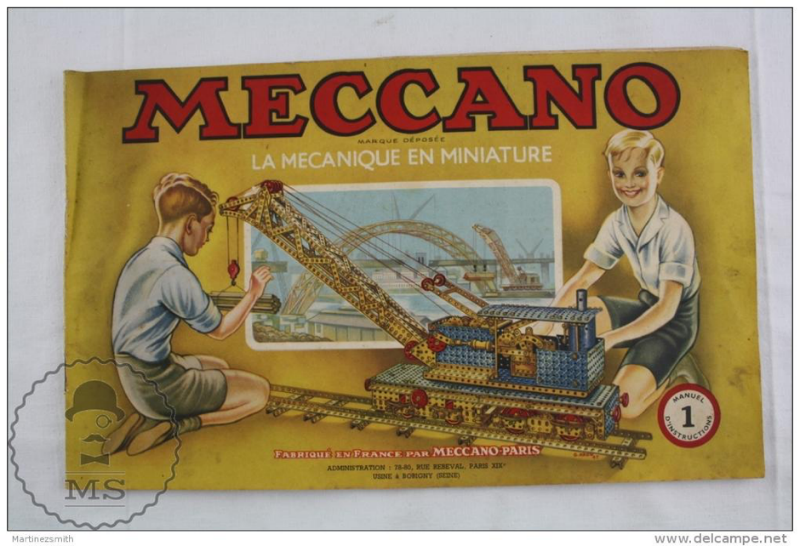
But with the advent of difficult 2000s, local owners began to look for a co-investor. At one time they became a Japanese toy manufacturer. And in 2013, the legendary company went entirely to Canadians.
Good artists copy. Otherwise, with the designers, the French somehow did not go. Most often in the network can be found references to local wooden designers. But almost everything we saw is imitation. For example, here is a copy of the American designer Lincoln Logs. By the way, the American version was inspired by Japanese architecture.

The firm Jeujura, which produced this set, is still alive.
And this is a replica of one of the German architectural designers.
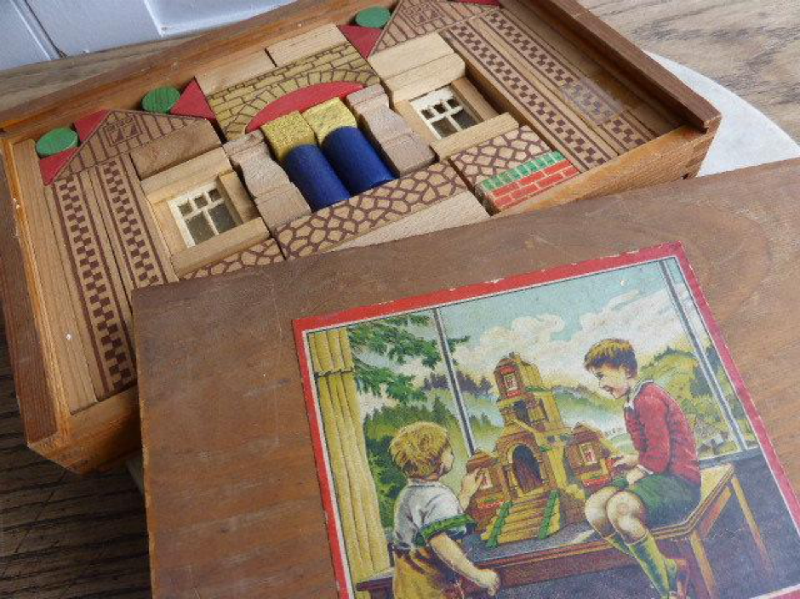
Brilliant artists steal . In general, borrowing ideas in the world of designers is normal. For the sake of interest, we regularly watch videos on "how to make your site builder." Not a site, but a constructor is just such a home project for a developer.
And last fall, in one of the videos about Architect, we saw a very familiar interface. “Yes, it's uKit,” we thought. Well, climbed to compare.

Left: uKit in the spring of 2015. Right: Architect in the fall of 2015.
As you understand, the French do not have any noticeable local website designers. But some French guy made his “blackjack designer,” taking us as an example, and even sold several hundred paid subscriptions.
In the next versions, Architect went its own way. So, maybe in the next couple of years you will hear about the unique French site builder.
In the next part: “Honey, let's buy a child 600 absolutely identical parts” or Features of the designers of Scandinavia, Israel, the United States and another country, which did not work.
